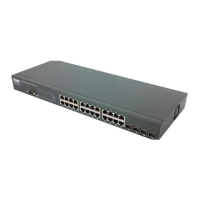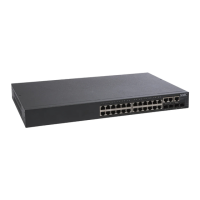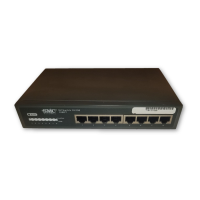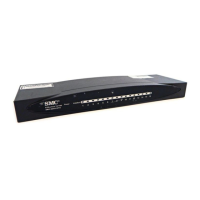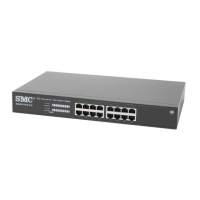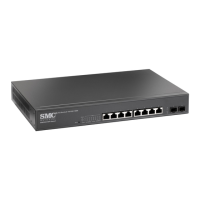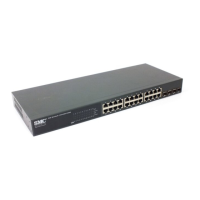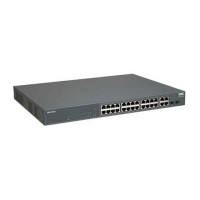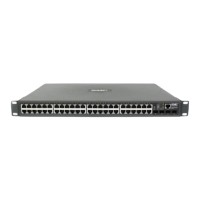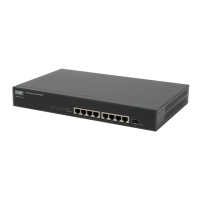2-4
Installing the SMC6624M Switch
Installation Procedures
Installing the SMC6624M
Switch
1. Prepare the Installation Site
■ Cabling Infrastructure - Ensure that the cabling infrastructure meets
the necessary network specifications. See the following table for cable
types and lengths, and see appendix B, “Cables and Connectors” for more
information:
Table 2-1. Summary of Cable Types to Use With the Switch
Port Type Cable Type Length Limits
Twisted-Pair Cables
10/100Base-TX • 10 Mbps operation:
Category 3, 4, or 5, 100-ohm unshielded
twisted-pair (UTP)
• 100 Mbps operation:
Category 5, 100-ohm UTP or shielded
twisted-pair (STP) cable.
100 meters
Note: Since the 10Base-T operation is through
10/100Base-TX ports, if you ever want to upgrade
the ports to 100Base-T, it would be best to cable
the ports initially with category 5 cable.
The 10/100-Base-TX ports on the switch support
Auto MDI/MDI-X, which allows you to use either
straight-through or crossover twisted-pair
cables for connecting to any network devices
including end nodes, such as computers, or to
other switches, hubs, and routers.
100/1000Base-T
(on the
SMC6624GT
module)
For either 100 Mbps or 1000 Mbps operation:
Category 5 or better, 100-ohm UTP or shielded
twisted-pair (STP) balanced cable. For 1000
Mbps (gigabit) operation, Category 5E cabling
or better is recommended.
Note: For 1000 Mbps operation, all four wire
pairs are used for data transmission.
100 meters
Note: The 100/1000Base-T module is compatible
with the IEEE 802.3ab standard including the
“Auto MDI/MDI-X” feature, which allows you to
use either straight-through or crossover twisted-
pair cables for connecting to any network
devices including end nodes, such as computers,
or to other switches, hubs, and routers.
Fiber Optic Cables
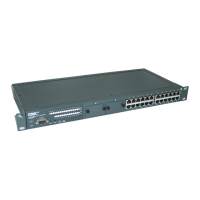
